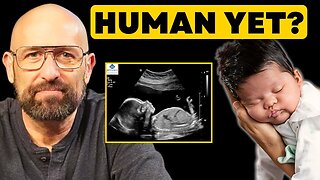Premium Only Content

Pulmonary Embolism
Pulmonary Embolism
Pulmonary embolism (PE) is a severe medical condition in which one or more lung arteries become blocked by a blood clot. If not promptly diagnosed and treated, this condition can be life-threatening. Exploring its causes, symptoms, diagnosis, treatment, and preventive measures is essential to fully grasp the gravity and nature of pulmonary embolism.
What Causes Pulmonary Embolism?
Pulmonary embolism typically originates from a condition known as deep vein thrombosis (DVT), where blood clots form in the deep veins of the legs or other parts of the body. These clots can travel through the bloodstream to the lungs, where they lodge in the pulmonary arteries and obstruct blood flow. Several factors can increase the risk of developing DVT and, subsequently PE:
1. Prolonged Immobility: Long periods of inactivity, such as during long-haul flights or extended bed rest, can slow blood flow in the veins, leading to clot formation.
2. Medical Conditions: Certain medical conditions like cancer, heart disease, and clotting disorders can predispose individuals to DVT and PE.
3. Surgery: Major surgeries, particularly those involving the legs or abdomen, can increase the risk of blood clots.
4. Lifestyle Factors: Smoking, obesity, and a sedentary lifestyle are significant risk factors for DVT and PE.
5. Hormonal Influences: Hormone replacement therapy and birth control pills can increase the risk of clotting, especially in women who smoke or have a history of blood clots.
Recognizing the Symptoms of Pulmonary Embolism
The symptoms of pulmonary embolism can vary widely depending on the size of the clot and the extent to which it blocks blood flow. Common symptoms include:
- Sudden Shortness of Breath: Rapid onset of difficulty breathing is often the most noticeable symptom.
- Chest Pain: Sharp, stabbing pain in the chest that may worsen with deep breaths or coughing.
- Rapid Pulse: An unusually fast heart rate known as tachycardia.
- Cough: Sometimes accompanied by bloody or blood-streaked sputum.
- Lightheadedness or Dizziness: Feeling faint or experiencing a sudden loss of consciousness.
These symptoms can mimic other conditions like a heart attack, making prompt medical evaluation crucial.
Full article is available on our youtube and website
-
 LIVE
LIVE
TimcastIRL
2 hours agoLEAKED Memo Says NO BACK PAY For Federal Workers Amid Government Shutdown | Timcast IRL
8,487 watching -
 LIVE
LIVE
Turning Point USA
1 hour agoTPUSA Presents This is The Turning Point Tour LIVE with Vivek Ramaswamy!
1,085 watching -
 LIVE
LIVE
Flyover Conservatives
21 hours agoWARNING! October 7th Unpacked and Exposed: What REALLY Happened?; GEN Z BACKS HAMAS?! - Hannah Faulkner | FOC Show
660 watching -
 LIVE
LIVE
Barry Cunningham
2 hours agoPRESIDENT TRUMP IS BRINGING THE RECKONING TO THE DEEP STATE!
7,102 watching -
 LIVE
LIVE
Drew Hernandez
1 hour agoCANDACE OWENS LEAKED CHARLIE KIRK MESSAGES CONFIRMED REAL & DEMS PUSH TO TRIGGER CIVIL WAR
819 watching -

Sarah Westall
2 hours agoSuperhuman Hearing of the Matrix: Reality is Different w/ Sharry Edwards
4.76K1 -
 LIVE
LIVE
LFA TV
23 hours agoLIVE & BREAKING NEWS! | TUESDAY 10/7/25
527 watching -
 30:00
30:00
BEK TV
6 days agoGUT HEALTH AND THE POWER OF KIMCHI WITH KIM BRIGHT ON TRENT ON THE LOOS
106K9 -
 33:18
33:18
Stephen Gardner
1 hour ago🔥BOMBSHELL: Trump's NEW REPORT Catches Democrats Red-Handed!
7.24K5 -
 10:20
10:20
Ken LaCorte: Elephants in Rooms
7 hours ago $0.16 earnedWhen does a fetus become a baby?
3.21K4
